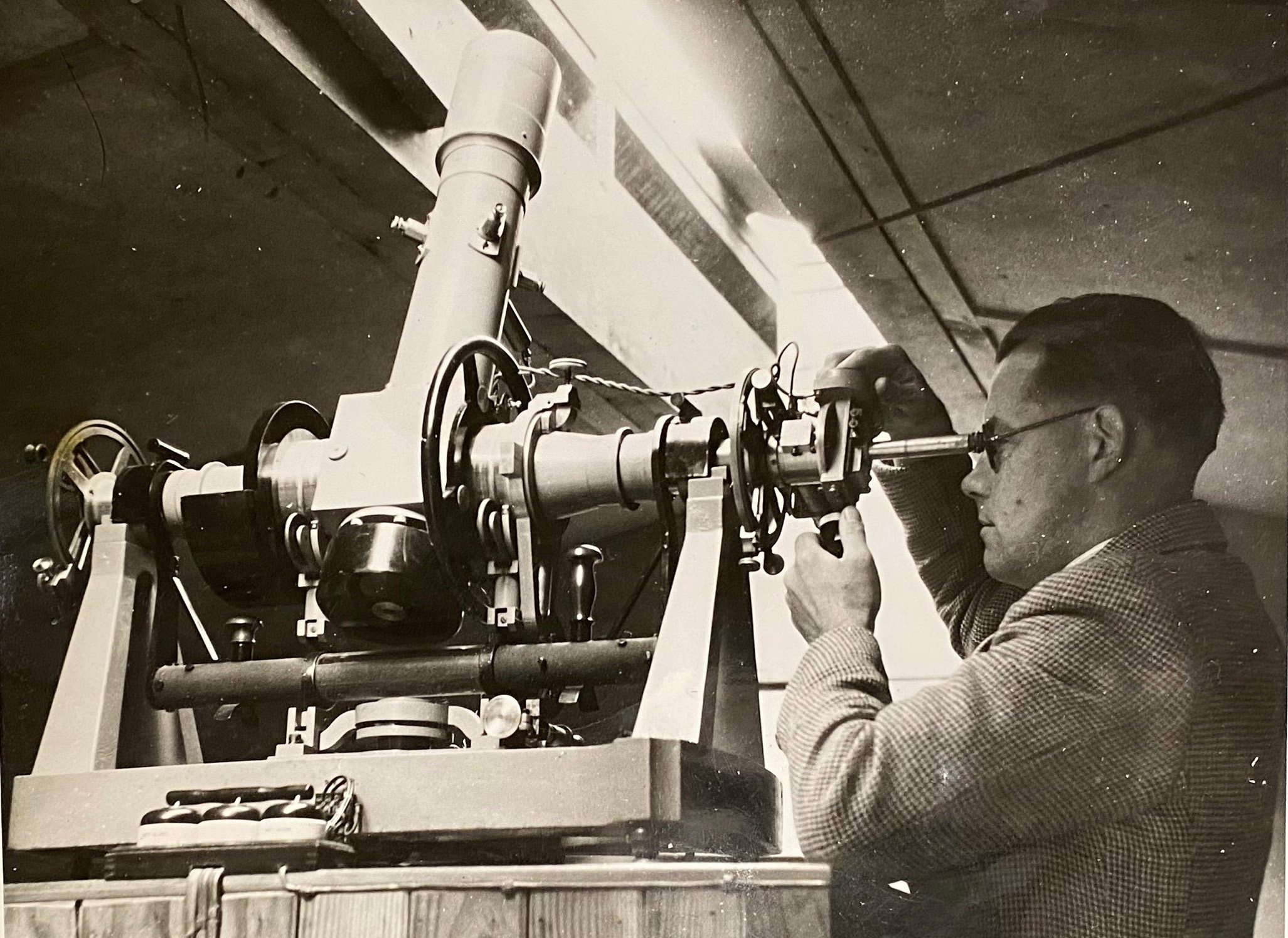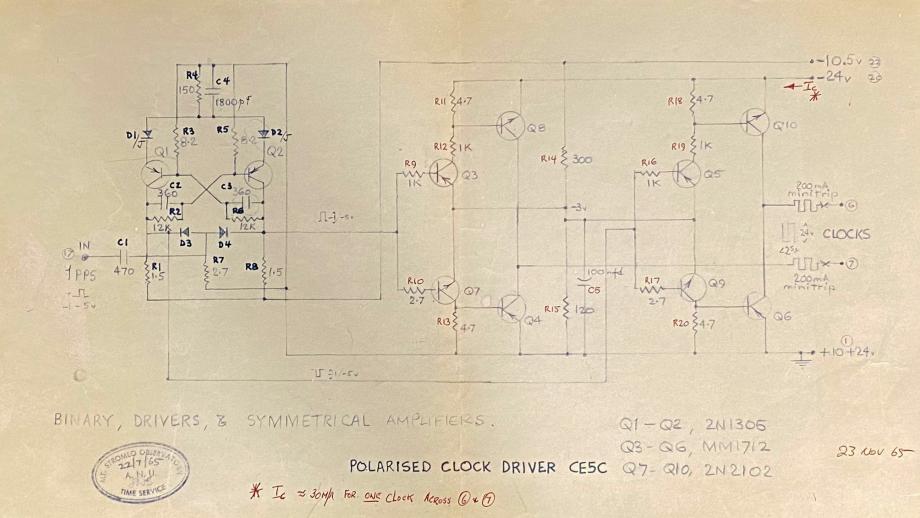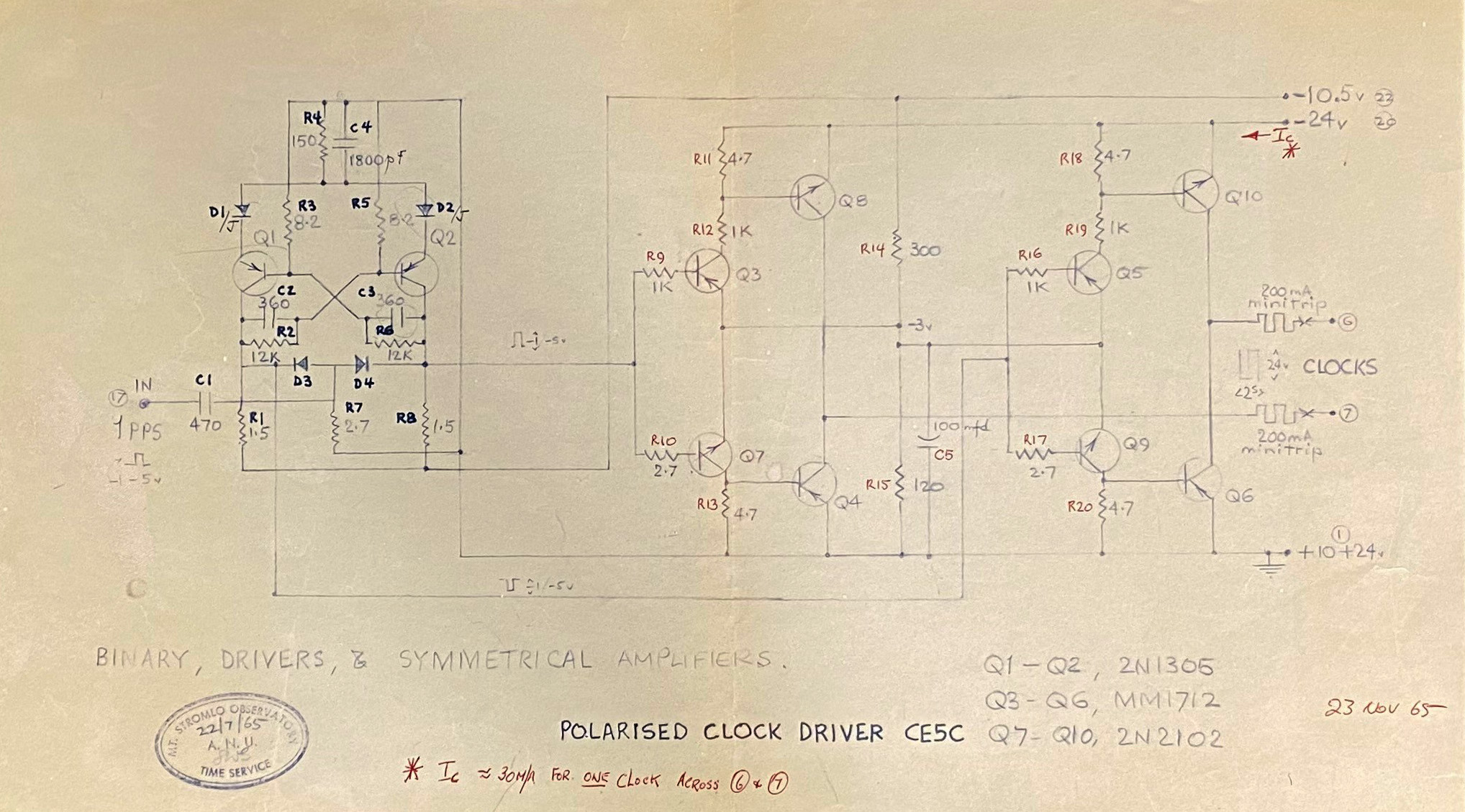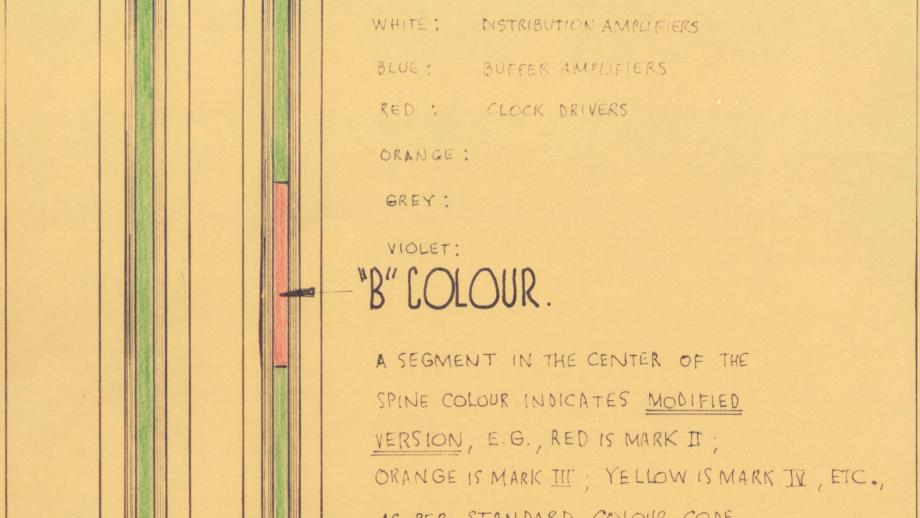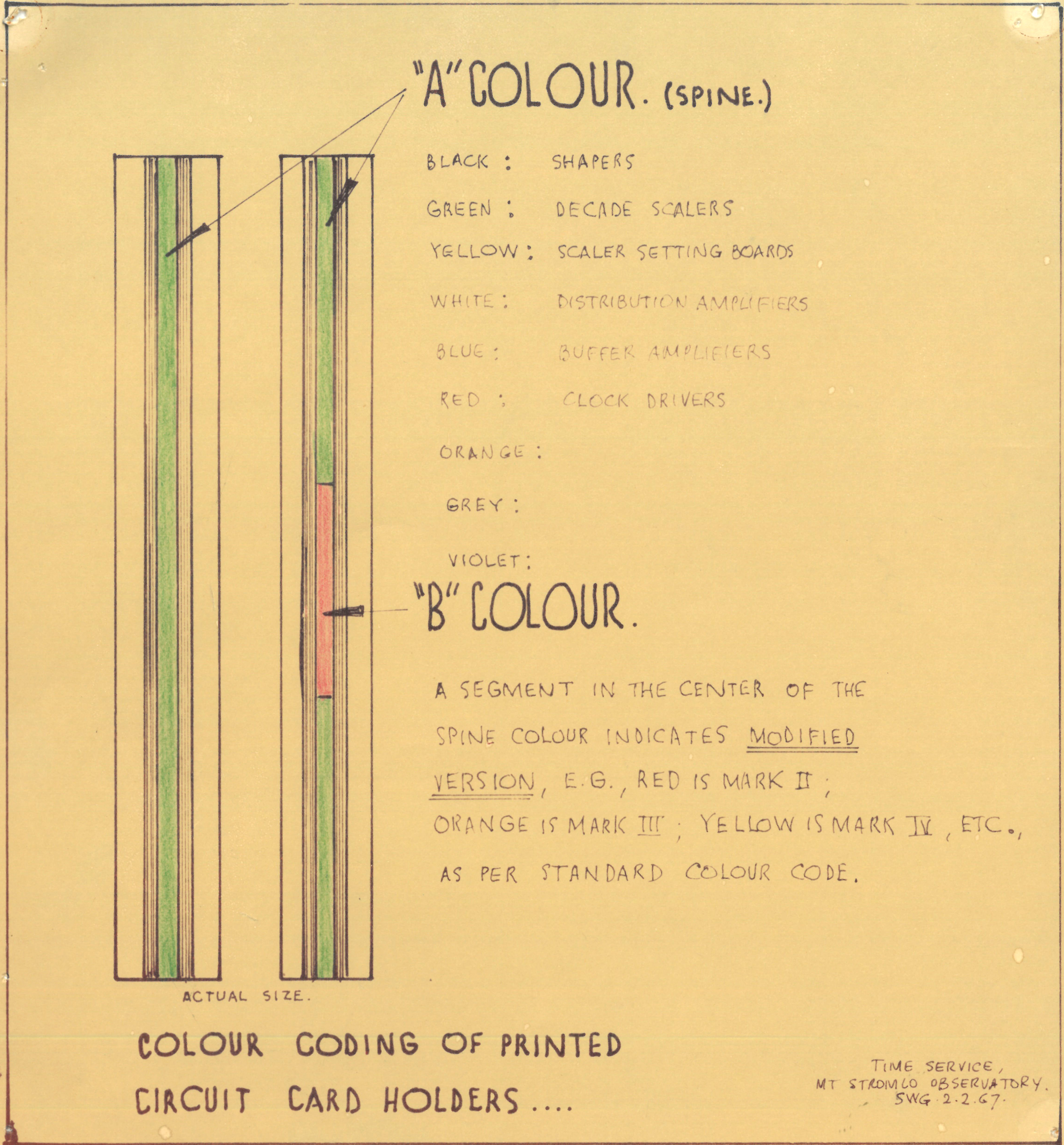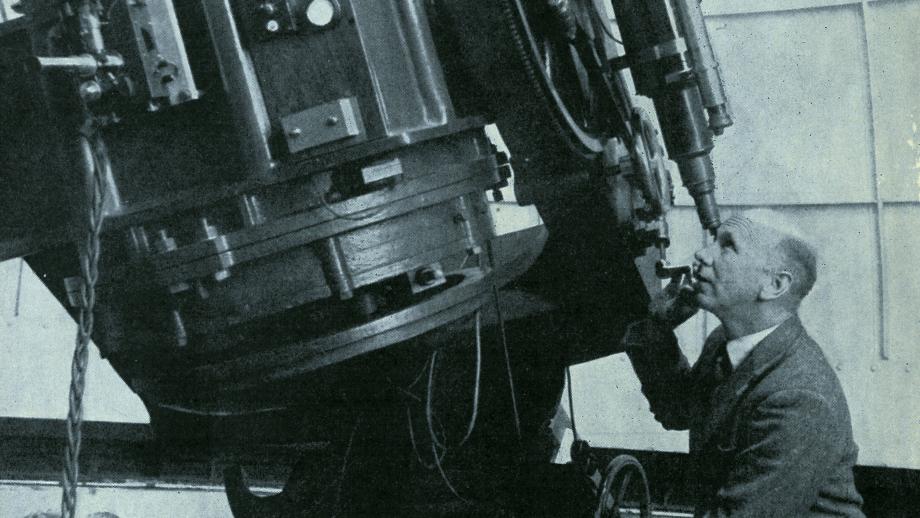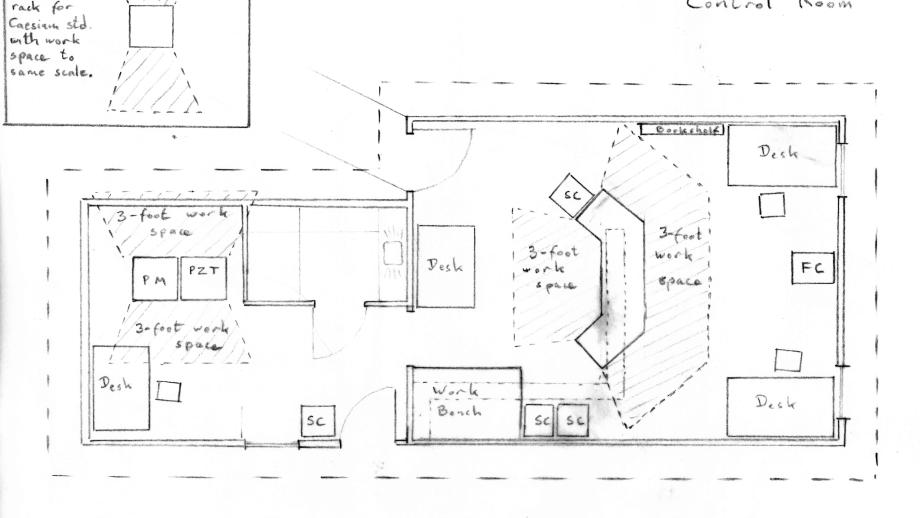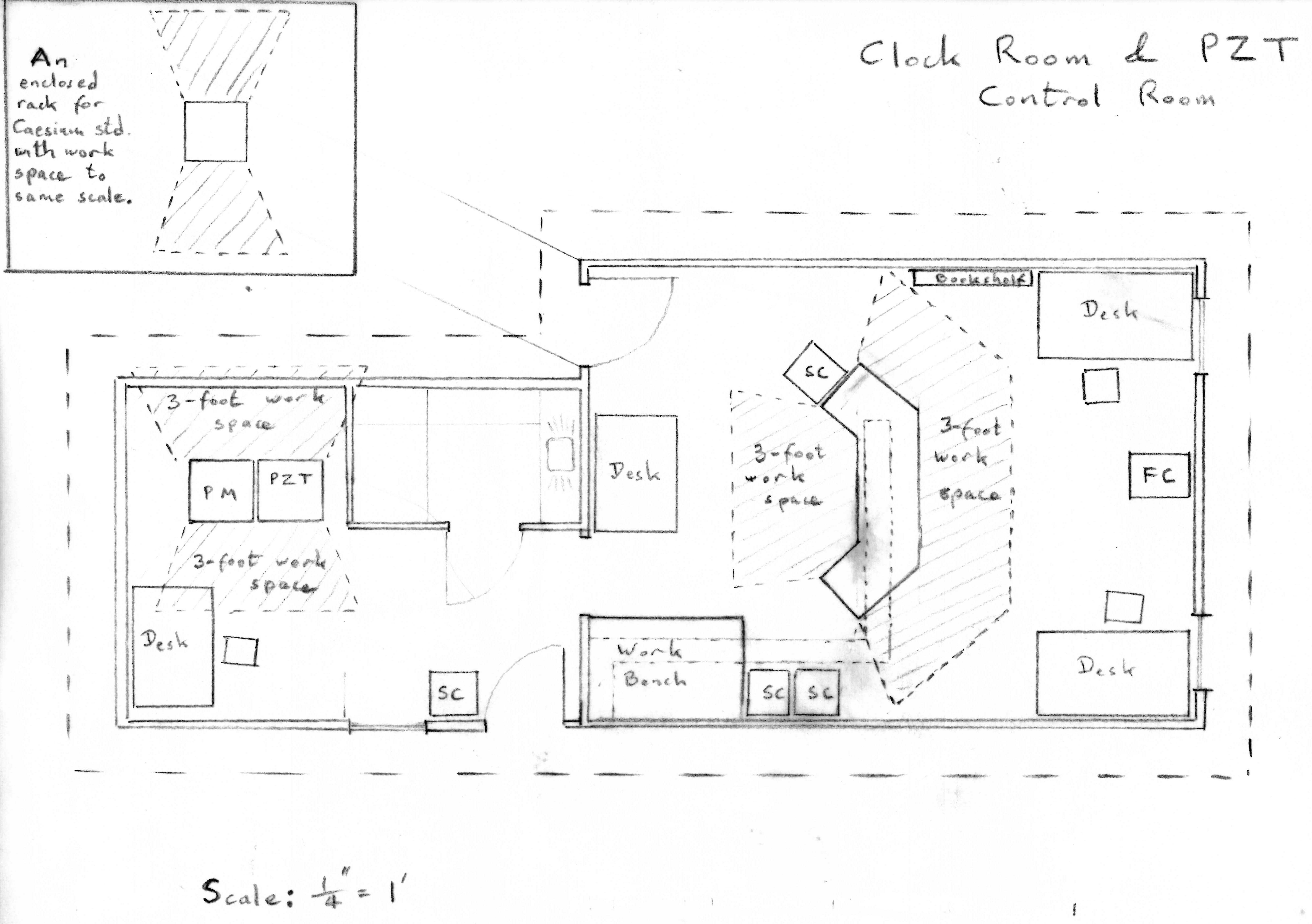In colonial Australia the task of providing accurate times to ships for navigational purposes was entrusted to astronomers, who measured time by checking the observational transits of the brightest stars and the daily rotation of the Earth on its axis. Initially this work was undertaken by astronomers at small observatories with transit telescopes and precision pendulum clocks, but as this work became more precise, many countries established national time services that broadcast time signals on the radio.
In 1944 the Australian National Time Service was established at Mount Stromlo Observatory, with time signals broadcast from naval radio transmitters in Belconnen. These time signals were used for the correction of clocks and as a frequency standard for the determination of exact locations in geodetic and cartographic work, as well as for Southern Ocean navigation.
The Time Service primarily researched problems connected with the motions of the earth and their seasonal and occasional determination. The Photographic Zenith Tube (PZT) was an instrument that checked the time by astronomical means, recording the passages of stars close to the zenith. The PZT was brought into regular use at the Mount Stromlo Observatory from March 1957, with the last plate observed on 27 August 1985.
In 1971 responsibility for the National Time Service was transferred to the Australian Surveying and Land Information Group (AUSLIG), overseen by the Commonwealth Government. In 1998 AUSLIG established a new laser ranging telescope at Mount Stromlo to support this work.

